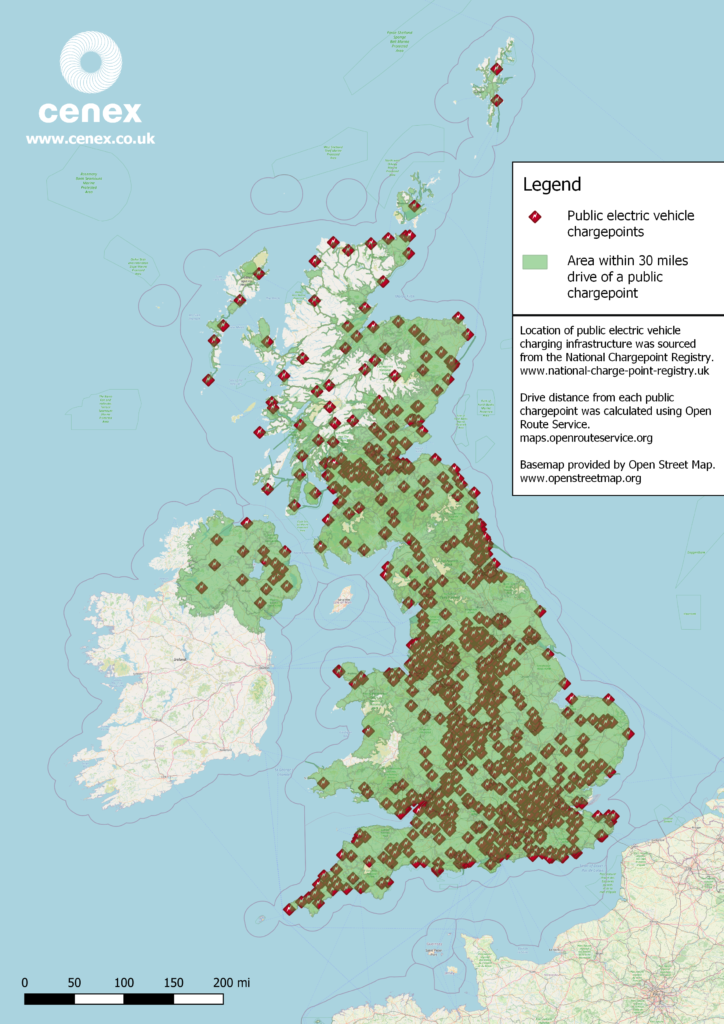Jacob Roberts spent two years as a local government officer. As such, he understands firsthand the challenges that declarations from the top, such as achieving net zero within a decade, can place on those tasked with delivery.
Mapping need
“Right now, the least regrets, lowest hanging fruit is to identify households with the means to buy an electric vehicle but who are being held back by a lack of charging infrastructure,” says Roberts.
To enable that, Cenex has developed a census-based mapping technique that helps to match areas in towns and cities without off street parking and where people are likely to be affluent enough to own one.
“For many households, not being able to charge at home, overnight is the single biggest barrier to them owning an EV,” he says, “and removing it can be as simple as putting one or two chargers on a street.”
Roberts says an equitable rollout is an admirable aim. “But if we are trying to be pragmatic and ensure money is spent as prudently as possible, it is important to focus on areas where EVs are likely to be – at least in the short term,” he suggests. “In the longer term, as the second hand market develops, you broaden the approach. But for me, that is later in the timeline of EV development.”
Raise awareness
Raising awareness of existing infrastructure is also important – and low cost, says Roberts.
“In many areas, there is now a very good network of rapid chargers – but people do not always know about it, particularly where the network is operated by private suppliers,” he says. “Many of us in the UK EV industry – myself included – have made the mistake of assuming that everyone has heard of Zap- Map!
“But engaging with residents and telling them that there are several rapid chargers
in their area can reduce the need for one on their street. For some people, that would be enough to convince them to buy an EV, or at least shade the decision.”
By way of evidence, Roberts points to the Budget commitment to ensure that nobody is ever more than 30 miles from a rapid charger.
“But we have mapped the data, and pretty much everywhere in the UK is now already within 30 miles of a rapid charger,” says Roberts. “If anything, that is a sign of how far we have come – and we don’t even know it.”

Public engagement is key
“If you have a plan in place and are going to start moving forward, my number one recommendation is to bring residents along with you,” says Roberts.
“You can have immaculate plans, but if you don’t engage early and keep residents abreast, they can rebel about losing parking spaces or losing pavement space or perceived trip-hazards and it can be hard to turn that around.
“Local authorities have to engage effectively and address any issues before it becomes political.”
Free 2020 EV report: packed with insight
 This article is one of a number of in-depth interviews conducted for The Energyst’s new 2020 EV report. It contains expert insight across a range of sectors, plus a survey of more than 300 firms around EV charging infrastructure plans.
This article is one of a number of in-depth interviews conducted for The Energyst’s new 2020 EV report. It contains expert insight across a range of sectors, plus a survey of more than 300 firms around EV charging infrastructure plans.
Sponsored by Arup, EDF, Good Energy, New Motion and Total Gas & Power, the report also includes views from: Arval, Birmingham Airport, DPD, Dreev, Engenie, ev.energy, Hitachi Capital Vehicle Solutions, Mitie, National Grid, Nottingham City Council, the John Lewis Partnership, TLT, UPS and Western Power Distribution. Download the report here.



